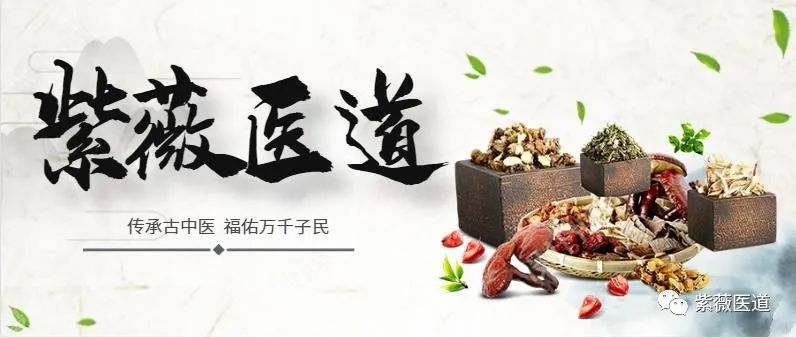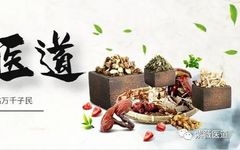
Yu Genchu (1734–1799), whose given name was Zhaoyuan, was from Taoli in Shanyin, Zhejiang (now Shaoxing City). Coming from a family of physicians, Yu inherited his family’s medical knowledge early on, extensively reading medical texts from both ancient and modern times, and drawing on the strengths of various schools of thought, particularly making significant contributions to the study of the Shanghan Lun (Treatise on Cold Damage) by Zhang Zhongjing.
He emphasized clinical practice, excelling in treating exogenous febrile diseases with remarkable efficacy, achieving a success rate of ninety percent. Due to his superb medical skills, he was known as Mr. Yu San.
Yu was well-versed in knowledge and maintained a humble demeanor, thus gaining a prominent reputation in the medical field, remaining influential for over forty to fifty years during the Qianlong and Jiaqing eras.
As a busy clinician, Yu authored few works, with Tongsu Shanghan Lun being his only surviving masterpiece.
This book has been revised and supplemented by several generations of renowned Zhejiang physicians, including He Xiushan, He Lianchen, Cao Bingzhang, and Xu Rongzhai, from the Qing Dynasty to the early years of the People’s Republic of China, further elaborating and enriching its content, systematically reflecting Yu’s clinical experiences and academic achievements throughout his life.
The entire book centers on Shanghan (cold damage), discussing the causes, symptoms, pulse diagnosis, and treatment of all exogenous febrile diseases. It adheres to ancient teachings without being rigid, is thorough yet not superficial, detailed and credible, and practical, earning it the praise of being a work that is “drawing from the past while adapting to the present.”
By eliminating the boundaries between cold and heat, and merging the studies of Shanghan and warm diseases, Yu became a pioneer in unifying the study of exogenous diseases in Traditional Chinese Medicine (TCM).


The Three Transformations in the Diagnosis of Exogenous Diseases

Based on the clinical characteristics of exogenous diseases, Yu utilized the four diagnostic methods to establish the “Three Transformations” in diagnosis as follows:
1. Fire Transformation
Patients with excessive Yang Qi in their constitution may be affected by the Qi of wind, dryness, and heat, or by cold and dampness that congeals and transforms into heat, resulting in a condition where both Yangs are mutually supportive, thus leading to a heat syndrome.
Transmission to Shaoyang:When the pathogen is in the Shaoyang channel, it is partially in the exterior; treatment should use Chai Hu Zhi Ke Tang (Bupleurum and Bitter Orange Decoction) to harmonize and release the exterior. If the pathogen has entered the Shaoyang organ, it is partially interior; treatment should use Hao Qin Qing Dan Tang (Artemisia and Scutellaria Decoction) to harmonize and clear.
Transmission to Yangming:If the exterior syndrome has resolved and the pathogen has entered Yangming, causing interior heat, with diffuse and formless heat filling the Yangming channel, if there is no solid accumulation, it is appropriate to use Xin Liang Xie Re (Spicy Cool to Drain Heat) and support with sweet and cold herbs; Xin Jia Bai Hu Tang (Newly Added White Tiger Decoction) is indicated. If gastric fluids are depleted and lung fluids are about to be lost, use Ren Shen Bai Hu Tang (Ginseng White Tiger Decoction) with fresh Rehmannia, fresh Dendrobium, pear juice, and rhizome of Imperata to sweetly and coldly rescue fluids and greatly nourish lung fluids.
Transmission to Jueyin:Jueyin is the organ of wind and wood, easily transforming heat into wind. If the pathogen transmits to Jueyin, and the heat stagnates, preventing the Jueyin Qi from dispersing, use Qing Gan Da Yu Tang (Clear Liver and Resolve Stagnation Decoction) or Si Ni San (Frigid Extremities Powder) with Xiang Fu, Huang Lian, Sang Ye, and Yu Jin to disperse; if the heat pathogen stirs up Jueyin liver fire, use Long Dan Xie Gan Tang (Gentiana Decoction to Drain the Liver) to greatly drain liver fire; if the heat is extreme and generates wind, causing liver wind to ascend, and the pathogen invades the pericardium leading to convulsions and unconsciousness, urgently administer Ling Yang Jiao Gou Teng Tang (Antelope Horn and Uncaria Decoction) with Zi Xue Dan to extinguish wind and open the orifices.
2. Water Transformation
Patients with insufficient Yang Qi in their constitution may be affected by cold and dampness, leading to a transformation into a cold syndrome.
Yangming Water Accumulation:If there is deficiency cold in the stomach, and food and fluids are not differentiated, there may be water accumulation. If there is still a Taiyang exterior syndrome, use Gui Zhi Ju Pi Tang (Cinnamon Twig and Tangerine Peel Decoction) to first resolve the exterior; if the exterior has resolved, use Xiang Sha Li Zhong Tang (Aromatic Sand to Regulate the Center Decoction) to warm the interior and promote the stomach Qi to transform the water accumulation.
Transmission to Taiyin:If the Taiyin spleen Qi is inherently deficient and is further affected by cold and dampness, use Huo Xiang Zheng Qi Tang (Agastache Decoction to Rectify Qi) to aromatically transform dampness.
Transmission to Shaoyin:If the kidney Yang is inherently deficient and the Taiyang exterior pathogen has not resolved, use Ma Huang Fu Zi Gan Cao Tang (Ephedra, Aconite, and Licorice Decoction) to resolve both.
3. Water and Fire Combined Transformation
Due to the differences in cold and heat of the pathogenic factors and the distinctions in Yin and Yang of the constitution, mixed symptoms of Yin and Yang, cold and heat may appear during the course of the disease.
Yu categorized the mixed changes of Yin and Yang, cold and heat, caused by the combined effects of damp-heat pathogens and the impact of the pathogens on Yin and Yang as Water and Fire Combined Transformation.
Damp-Heat Syndrome:The spleen governs transportation and transformation, and the stomach governs receiving; if the spleen and stomach are not harmonious, water and dampness cannot be transformed, leading to stagnation and transformation into heat, or if the exogenous damp-heat pathogen affects the spleen and stomach, it can lead to damp-heat syndrome.
If the middle Qi is inherently deficient and damp-heat is present, with more Taiyin symptoms and fewer Yangming symptoms, leading to heat being heavier than dampness, it is appropriate to increase or decrease Huang Lian Xie Xin Tang (Coptis Decoction to Drain the Heart) for clearing; if dampness obstructs and heat stagnates, blocking the Sanjiao, with equal damp-heat, treatment should focus on dispersing the Sanjiao.
Mixed Cold and Heat Syndrome of Shaoyin and Jueyin:The hand Shaoyin heart contains the emperor fire, the foot Shaoyin kidney stores the kidney water, the hand Jueyin pericardium contains the gallbladder fire, and the foot Jueyin liver connects with kidney water.
If the pericardium contains gallbladder fire and stirs upward, it manifests as heat wind; if the liver Qi contains kidney water and responds, it manifests as cold wind. Fire is hot, and water is cold, hence the symptoms often present as mixed cold and heat.
If water is burned by fire, and the external pathogen carries fire and moves, with Yin deficiency preventing fluids from rising, use Huang Lian E Jiao Tang (Coptis and Donkey-hide Gelatin Decoction) to strengthen water and control fire; if fire is obstructed by water, and Yang Qi is internally stagnant, preventing it from reaching the exterior, use Jia Wei Si Ni San (Modified Frigid Extremities Powder) to disperse stagnation and promote Yang; if there is external cold and internal heat, despite deep cold and deep heat, use Xin Jia Bai Hu Tang; if there is internal cold and external heat, with extreme deficiency of kidney Yang in the lower burner; if the floating Yang is externally excessive, use Tong Mai Si Ni Tang (Open the Pulse and Frigid Extremities Decoction) to warm and restore Yang.
Note: Please follow medical advice for specific treatment and medication!This article is excerpted from Ming Yi Yong Ming Fang, edited by Zhang Dong and Song Chunyan, published by the People’s Military Medical Publishing House, April 2010. This is for academic exchange only; if there is any infringement, please contact for deletion, and please indicate the source when reprinting.

